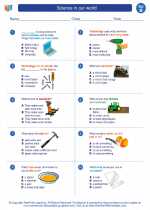Transformer
A transformer is a device that is used to transfer electrical energy from one circuit to another through electromagnetic induction. It can either increase (step-up) or decrease (step-down) the voltage of an alternating current (AC).
Basic Components of a Transformer
1. Primary Coil: The coil through which the input current flows.
2. Secondary Coil: The coil through which the output current flows.
3. Core: It provides a path for the magnetic flux and is usually made of iron or steel.
How a Transformer Works
When an alternating current flows through the primary coil, it generates a changing magnetic field in the core. This changing magnetic field induces a voltage in the secondary coil through electromagnetic induction. The ratio of the number of turns in the primary coil to the number of turns in the secondary coil determines the voltage transformation ratio.
Step-Up Transformer
A step-up transformer increases the voltage from the primary to the secondary coil. This type of transformer is commonly used to transmit electrical power over long distances at high voltages, reducing energy losses.
Step-Down Transformer
A step-down transformer decreases the voltage from the primary to the secondary coil. This type of transformer is used to supply lower voltages for household and industrial applications.
Study Guide
- What is the basic function of a transformer?
- What are the primary components of a transformer?
- How does a transformer work?
- What is the difference between a step-up and a step-down transformer?
- Give examples of practical applications of step-up and step-down transformers.
[Transformer] Related Worksheets and Study Guides:
.◂Science Worksheets and Study Guides Second Grade. Science in our world

 Worksheet/Answer key
Worksheet/Answer key
 Worksheet/Answer key
Worksheet/Answer key
 Worksheet/Answer key
Worksheet/Answer key
 Vocabulary/Answer key
Vocabulary/Answer key
